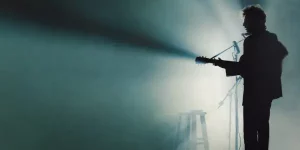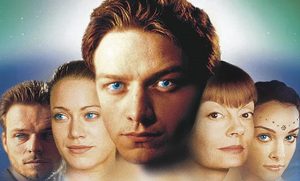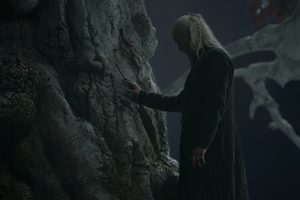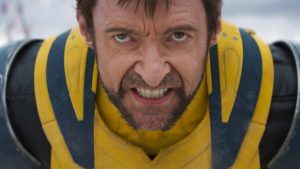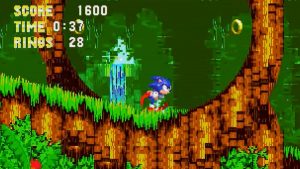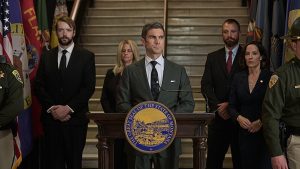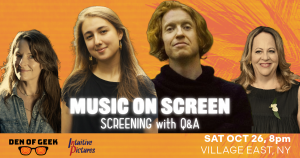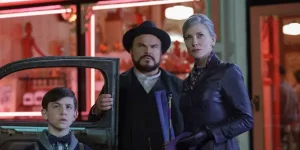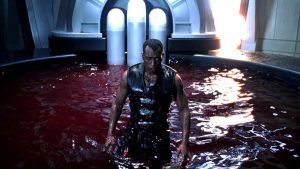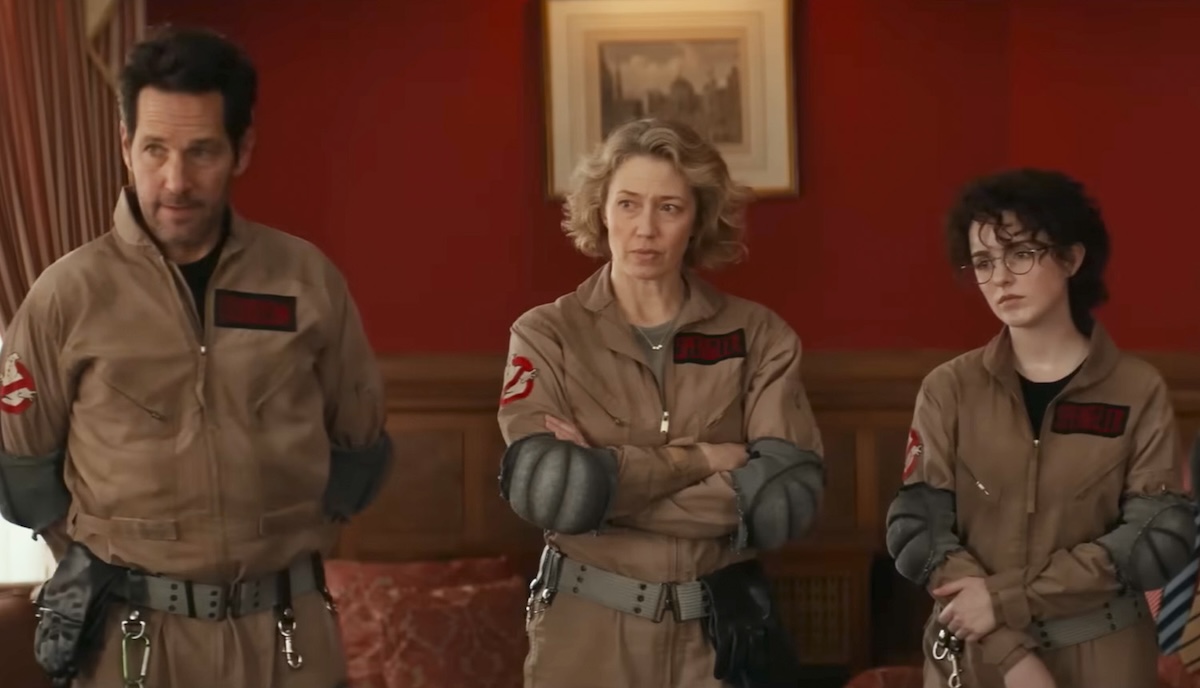
Forty years later, it’s safe to say Sony and one of its most beloved film titles still ain’t ‘fraid of no ghost. They also apparently need not fear curmudgeonly film reviews either based on the solid performance of Ghostbusters: Frozen Empire over last weekend’s box office.
Despite receiving a tepid Rotten Tomatoes aggregate score of 44 percent, the fourth or fifth film in the franchise—depending how you count Paul Feig’s 2016 remake of the same name—opened above expectations with an estimated $45 million in three days. That is nearly identical to 2021’s Ghostbusters: Afterlife, which opened at $44 million, and the aforementioned 2016 remake, which grossed $46 million in its debut. Given such similarities, it’s probably worth noting that one reason the 2016 reboot was perceived as a financial disappointment and Afterlife was not is because the former cost a reported $145 million while Afterlife’s price tag was about half that. Frozen Empire, meanwhile, reportedly cost $100 million. But at the end of the day, all three seem to be performing in the same ballpark.
This repeated symmetry belies a reality for both the franchise as a commercial property and a creative exercise: Ghostbusters seems unable to grow the size of its audience or fanbase. So, then, what is the future of said franchise?
Tellingly, Frozen Empire released in the same year as the 40th anniversary of the 1984 comedy that spawned it all, and that film’s shadow still looms large over the series. In fact, despite featuring an original story and villain (unlike the outright remake quality of Afterlife), Frozen Empire bends over backward to include not only every living star from the Gen-X touchstone, but also supporting characters, bit players who only appeared in one scene, and of course many of the same ghosts. Nonetheless, the film intriguingly feels the most removed from the ’84 classic’s tone and its smirking deadpan. The original was an adult-aimed comedy that featured jokes about J. Edgar Hoover, leering college professors, and spectral fellatio.
Yet while many of the same characters who made those jokes appear in Frozen Empire, more so than even 2021’s Amblin-adjacent Afterlife, Frozen Empire has drifted entirely toward being a kids’ movie. In fact, the only major character arc in the film is carried by the newest films’ best addition, adolescent Phoebe Spengler (Mckenna Grace), and her first love’s crushing on a ghost (Emily Alyn Lind). Meanwhile much of the other charm that exists comes from the dysfunctional family dynamic between Phoebe and her parents (Carrie Coon and Paul Rudd), although other young characters like those played by Finn Wolfhard and Logan Kim are less well-served by an overstuffed screenplay. Even so, the film feels like it’s operating more on their wavelength than, say, Bill Murray who shows up and disappears for two and a half scenes.
As a consequence, by the time the credits roll on Frozen Empire the idea of what Ghostbusters is appears to have shifted entirely from the 1984 comedy hit sold as a slightly naughty, VFX-heavy laugher featuring former SNL stars to, well, the Saturday morning cartoon that children of the ‘80s grew up with afterward. Frozen Empire director Gil Kenan has not hidden in the press the influence that The Real Ghostbusters cartoon series had on the new movie, and the friendliest reading of the film is it plays exactly like a cartoon, complete with a Casper-esque subplot adjusted for 21st century sensibilities. That is not necessarily a bad thing, but if Sony wants to keep the franchise going past Frozen Empire, the new film’s reception might be a clarifying moment to fully commit a pivot toward that.
For better or worse, audience interest has stalled. The film’s limited but loyal fanbase remains the Gen-Xers and elder millennials who grew up with Ghostbusters movies and cartoons, and the children of today who are showing up for a kids adventure movie (often with parents who watched the original film and cartoon show). Indeed, EnTelligence audience tracking reported that 56 percent of the new installment’s audience was under the age of 35 and more than 54 percent of the opening weekend attendees were catching Saturday and Sunday matinees—primetime for families.
In this way, the new film’s disjointed efforts to focus just as much on the kid busters as the Boomers who will not let the proton pack go—more your Dan Aykroyds than Bill Murrays—hints at how the franchise is divided between serving two masters. There also seems to be remnants of Sony’s perplexing insistence that Ghostbusters could be a massive multi-franchised IP similar to Marvel or DC Comics. At least that was this writer’s reading of a shoehorned subplot involving a new Ghostbusters R&D lab which seemed largely divorced from the rest of the movie and only added more tertiary characters.
And yet, it would seem whichever direction Sony goes—be it another SNL alumni star vehicle, a la the 2016 redo, or the current iteration of kids claiming their parents’ toys as their own—there is a ceiling the brand can no longer get through. It’s obviously no longer 1984, and the only audience where the series seems to be growing is with the extremely young.
All of which is to say the series seems to be at a crossroads. Should Sony wish to continue the brand—and Frozen Empire’s longer term performance in the weeks to come may be the ultimate determinant of that—there are a few directions they could go. The studio could obviously continue the story of the next generation of Spenglers fighting ghosts; they could continue to attempt to expand the Ghostbusters brand as a shared universe with the long-threatened spinoffs; or they could attempt another reboot.
Looking at the numbers, we suspect the fixation on a shared universe of Ghostbusters films should be put in the same dustbin that surely holds unused treatments for Morbius 2 and Madame Web Returns. The era of copying Marvel’s early success seems to be at an end (including perhaps for Marvel nowadays). So what is Ghostbusters as a more contained franchise: a comedy series or a kids adventure franchise?
Personally, there will only ever be one great Ghostbusters movie, and it came out in 1984. Attempting to recapture that lightning in a bottle has never quite worked out, including when all the same creatives collaborated on Ghostbusters II way back in ‘89. But given the state of the franchise 40 years on, it may be time to let the ghost of its comedy roots go: both in terms of thinking of Ghostbusters as an adult-skewing comedy and one which needs to keep summoning all the old faces for “one last ride.” The only growth the series seems to have is with family audiences. So if Sony wants the next one to be better received, it might just be time to accept that fact and stop trying to serve all masters, which leads to a climax with nearly a dozen Ghostbusters just standing around waiting for Phoebe to do her thing.
It was kids’ nostalgia that somehow turned the movie where Dan Aykroyd is pleasured by a spirit into a yarn about tykes with proton packs. Maybe it’s time to just let them keep ‘em?
The post Ghostbusters: Frozen Empire Leaves the Franchise at a Crossroads appeared first on Den of Geek.
